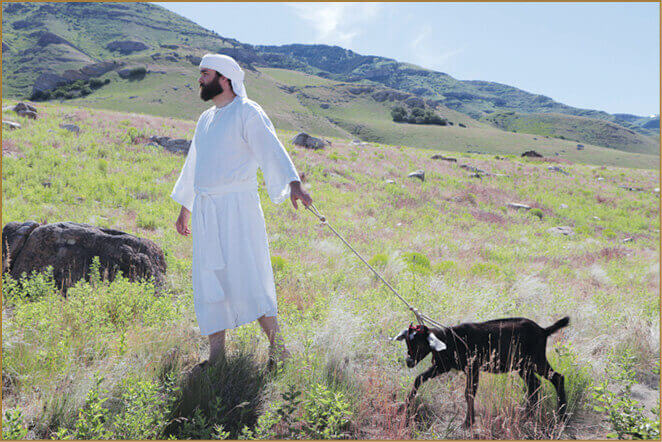Scapegoat
The term scapegoat, used in modern times to blame someone for others’ mistakes or wrongdoings, originates in the Old Testament. Anciently, the scapegoat, which prefigured Jesus Christ’s atoning sacrifice, had an important role in the Day of Atonement procedures. The scapegoat was presented in the temple “alive”; it served “to make an atonement” for the people. The high priest laid his hands upon the scapegoat’s head and then he confessed over the scapegoat “all the iniquities of the children of Israel, and all their transgressions in all their sins” (Lev. 16:21); in this manner, the high priest transferred their sins “upon the head of the goat” (Lev. 16:21; see also 16:8, 10, 21–22, 26).

A priest (model) takes the scapegoat into the wilderness (see Lev. 16:10).